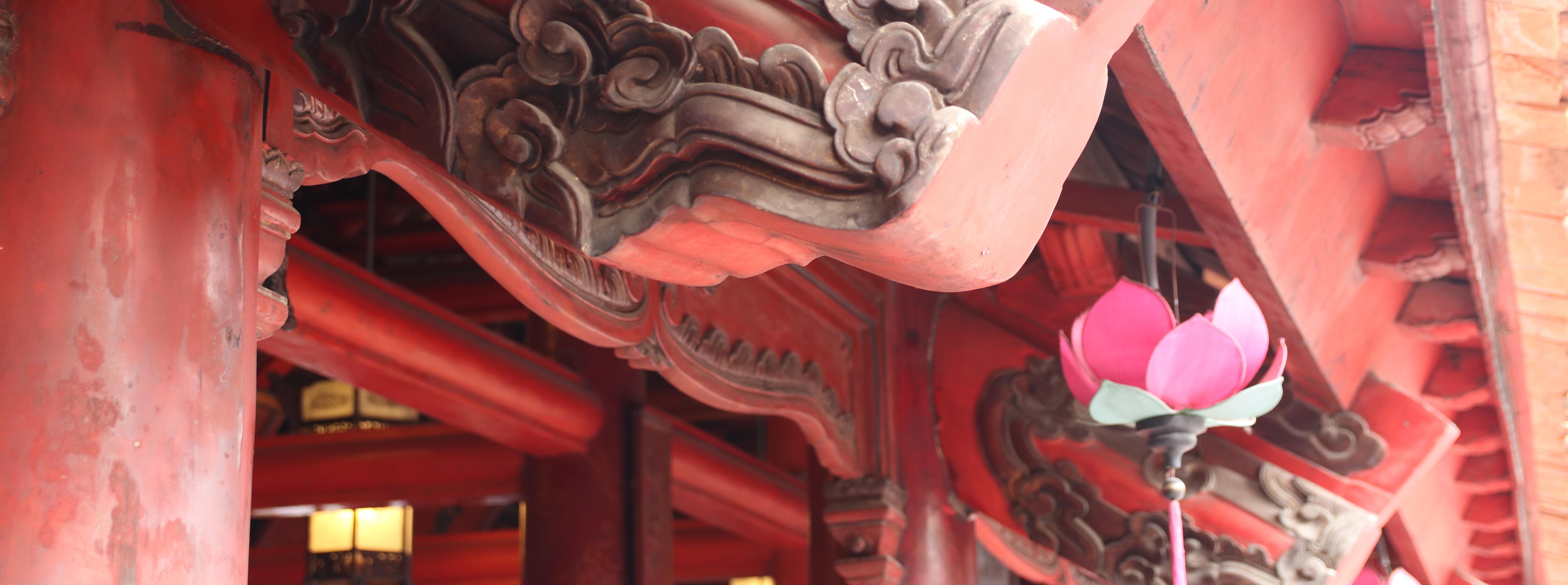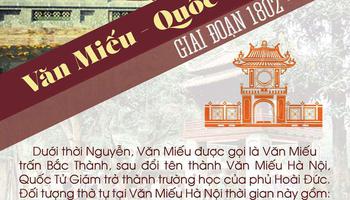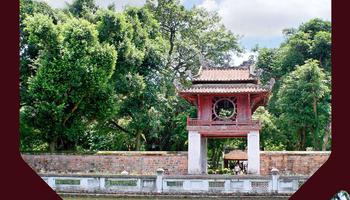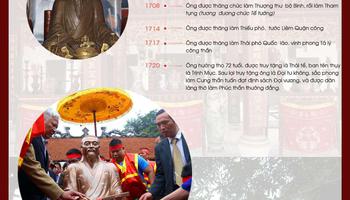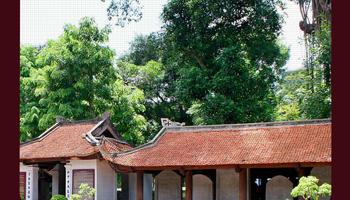VĂN MIẾU – QUỐC TỬ GIÁM SPREADING THE TRADITION OF FONDNESS OF STUDYING
Văn Miếu – Quốc Tử Giám and the World Documentary Heritage of 82 Doctoral steles have always preserved and spread the tradition of fondness of studying, respect for the teacher, and the talents of the nation. Today, these messages are still upheld, and this is the motivation for students to strive, firmly step on the path of education, making contributions to the homeland and the country.
Văn Miếu – Quốc Tử Giám was built in the 11th century under the Lý dynasty to expand learning and train talents for the country. In 1484, King Lê Thánh Tông ordered set up of the Doctor's stele in order to honor talents, encourage learning now and then... Because learning is the root, the key to all success, helping society flourish, and the basis for people to be kind.
The laureates’ stelae were first erected at Van Mieu – Quoc Tu Giam in 1484 under the reign of the King Lê Thánh Tông (1460-1497) in order to promote talents and for the generations to follow. The 1304 doctors whose names were engraved on 82 steles are the pride of the Vietnamese people. Among those are famous scholars. Especially on the stele, there are many families and localities famous for their academic tradition, such as: The Thân family 3 generations passed the Royal exams in Yên Ninh commune, Bắc Giang; the Ngô family had 5 generations passed the Royal exams in Vọng Nguyệt, Yên Phong... These talents made many contributions to the development of the homeland and the country. Their life and careers deserve to be great examples for the future generations to follow and learn.
Today visiting Văn Miếu - Quốc Tử Giám students will encounter architectural works with meaningful names that convey educational messages. For example, two small gates on the east and west sides of Đại Trung gate (Great Middle Gate) are Thành Đức (Accomplished Virtue) and to the right Đạt Tài (Attained Talent).
Two sides of Khuê Văn Pavilion Bí Văn gate and the other to Súc Văn gate. Bí Văn means coherent writing style, Súc Văn means concise content. Khuê Văn Pavilion was built in the spring of 1805, the symbol of Hanoi capital, it is one of the most typically historical, cultural and artistic structures of Thăng Long and the whole country.
There are deeply humane messages, which the ancients have put into the names of ancient architectural works and artifacts in this landmark. Generations of students today, when visiting the landmark, will have the opportunity to learn the meaning of those messages in order to know how to do useful things for society and worthy of the ancestors.
The examinations are coming, Văn Miếu – Quốc Tử Giám wishes you all to be confident and steadfast in your chosen path to success in the future.
World Documentary Heritage of 82 Doctoral steles
Accomplished Virtue
Attained Talent

Students and parents offering incense to the headmaster of Quốc Tử Giám Chu Văn An at Thai Hoc courtyard
The museum where students learn about the history of examinations and exam methods under the feudal system
The Heritage Discovery Room where students can learn more deeply about the tradition of examinations, as well as Chinese characters - Han Nom heritage on the Doctor's stele erected at the Văn Miếu – Quốc Tử Giám.
Students learn the meaning of the word “Hieu hoc” (fondness of learning)- ancient Chinese characters engraved on the stele of the exam in 1763
Keeping wishes are small cards where students can share their dreams in the most simple way
“Asking for words” is the cultural beauty of the Vietnamese people that young people are inheriting, hoping they will understand and cherish the precious tradition of the ancestors
LH
